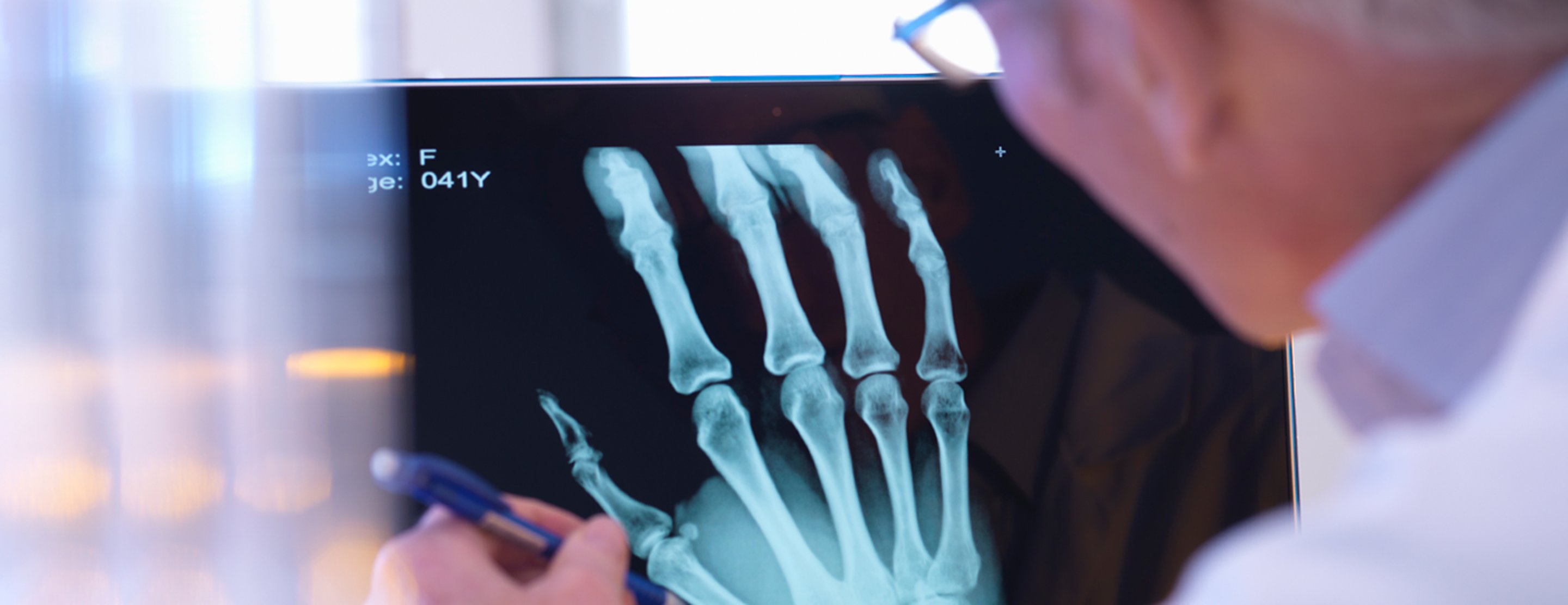
Joint x-ray
Definition
This test is an x-ray of a knee, shoulder, hip, wrist, ankle, or other joint.
Alternative Names
X-ray - joint; Arthrography; Arthrogram
How the Test is Performed
The test is done in a hospital radiology department or in the health care provider's office. The x-ray technologist will help you position the joint to be x-rayed on the table. Once in place, pictures are taken. The joint may be moved into other positions for more images.
How to Prepare for the Test
Tell your provider if you are pregnant. Remove all jewelry before the x-ray.
How the Test will Feel
The
Why the Test is Performed
The x-ray is used to detect
What Abnormal Results Mean
The x-ray may show:
Arthritis - Fractures
Bone tumors - Degenerative bone conditions
Osteomyelitis (infection of the bone)
The test may also be performed to find out more about the following conditions:
Acute gouty arthritis (gout) Adult-onset Still disease Caplan syndrome Chondromalacia patellae - Chronic gouty arthritis
Congenital dislocation of the hip Fungal arthritis Non-gonococcal (septic) bacterial arthritis Osteoarthritis Pseudogout Psoriatic arthritis Reiter syndrome Rheumatoid arthritis Runner's knee - Tuberculous arthritis
Risks
There is low radiation exposure. X-ray machines are set to provide the smallest amount of radiation exposure needed to produce the image. Most experts feel that the risk is low compared with the benefits. Children and the fetuses of pregnant women are more sensitive to the risks of the x-ray. A protective shield may be worn over areas not being scanned.
References
Contreras F, Perez J, Jose J. Imaging overview. In: Miller MD, Thompson SR, eds. DeLee, Drez, & Miller's Orthopaedic Sports Medicine. 5th ed. Philadelphia, PA: Elsevier; 2020:chap 7.
Kapoor G, Toms AP. Current status of imaging of the musculoskeletal system. In: Adam A, Dixon AK, Gillard JH, Schaefer-Prokop CM, eds. Grainger & Allison's Diagnostic Radiology: A Textbook of Medical Imaging. 7th ed. Philadelphia, PA: Elsevier; 2021:chap 38.
Review Date: 04/27/2023
The information provided herein should not be used during any medical emergency or for the diagnosis or treatment of any medical condition. A licensed physician should be consulted for diagnosis and treatment of any and all medical conditions. Call 911 for all medical emergencies. Links to other sites are provided for information only -- they do not constitute endorsements of those other sites. Copyright ©2019 A.D.A.M., Inc., as modified by University of California San Francisco. Any duplication or distribution of the information contained herein is strictly prohibited.
Information developed by A.D.A.M., Inc. regarding tests and test results may not directly correspond with information provided by UCSF Health. Please discuss with your doctor any questions or concerns you may have.





